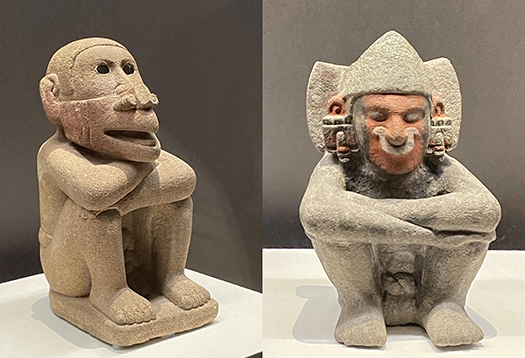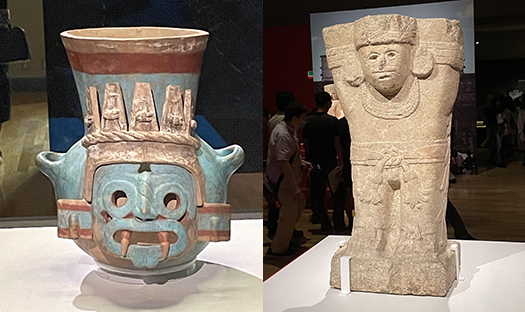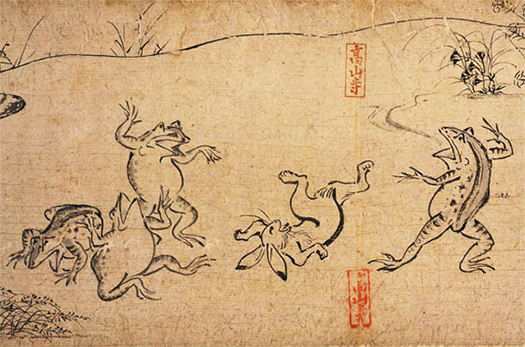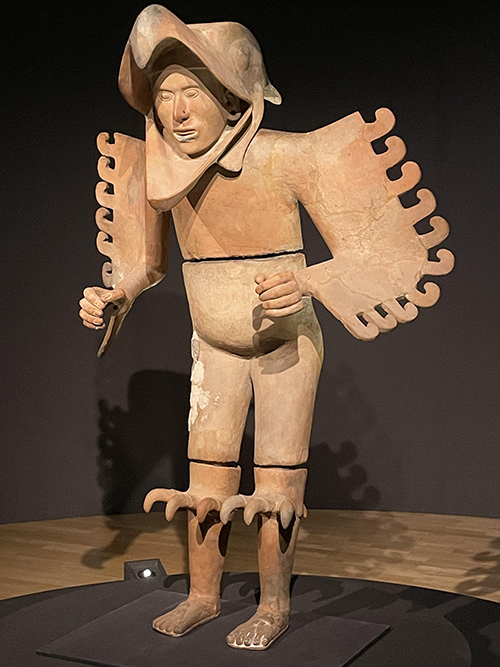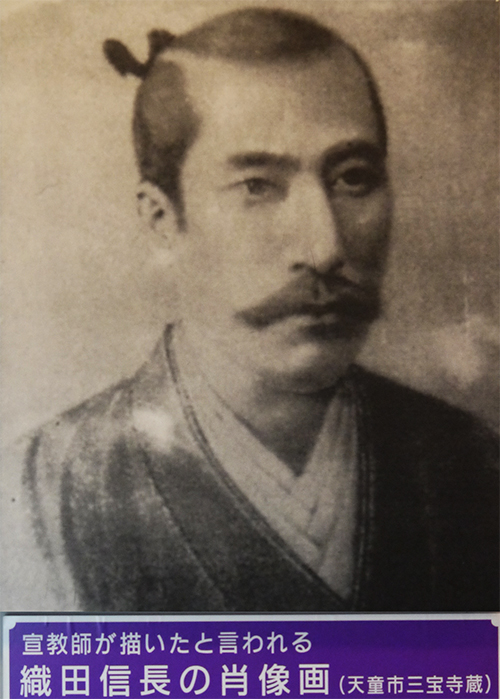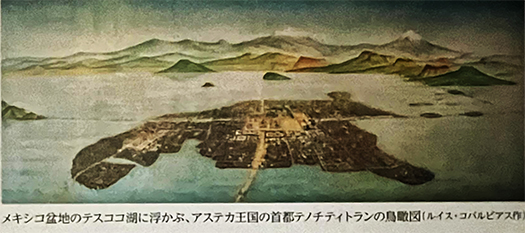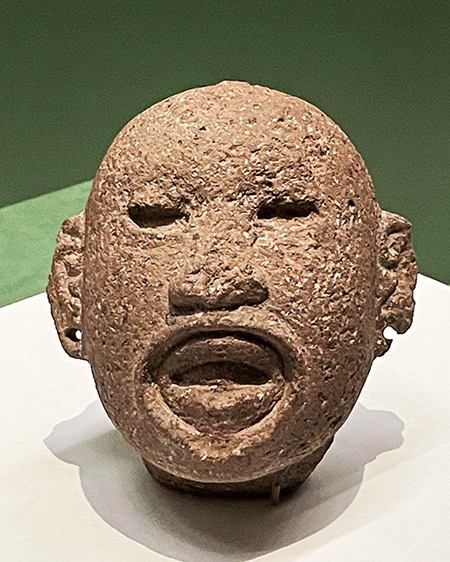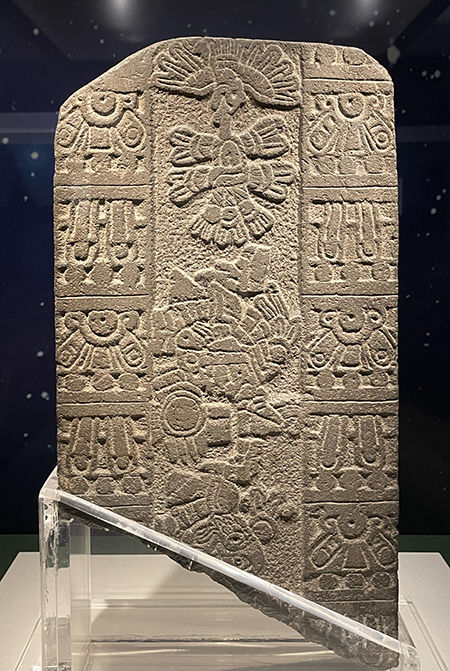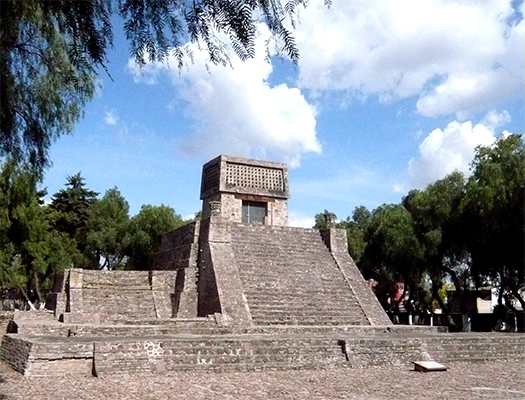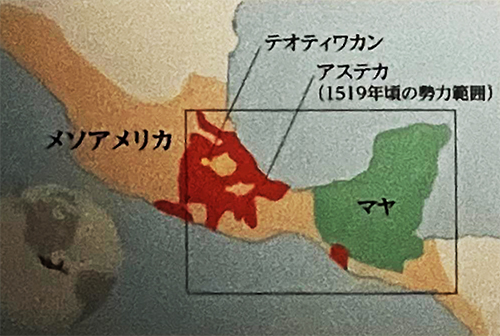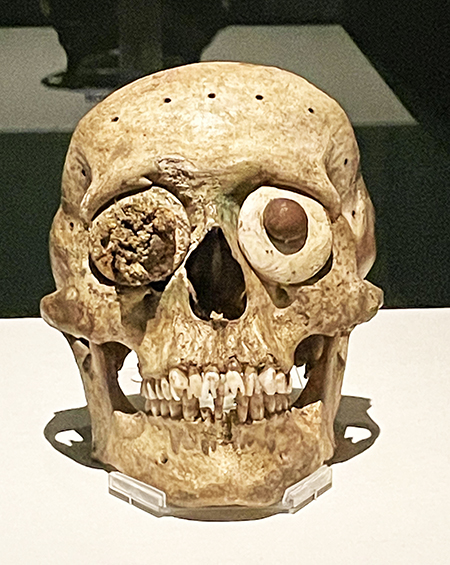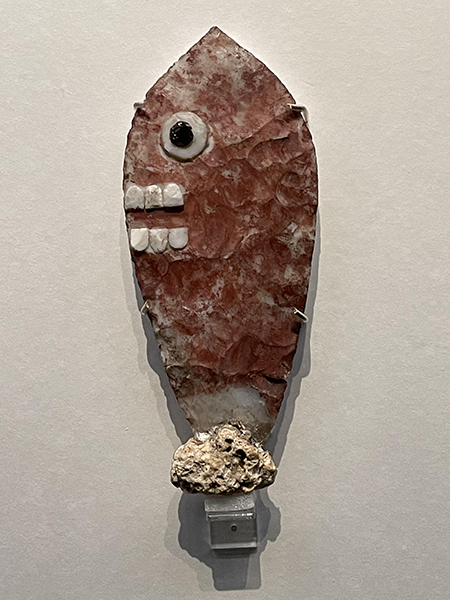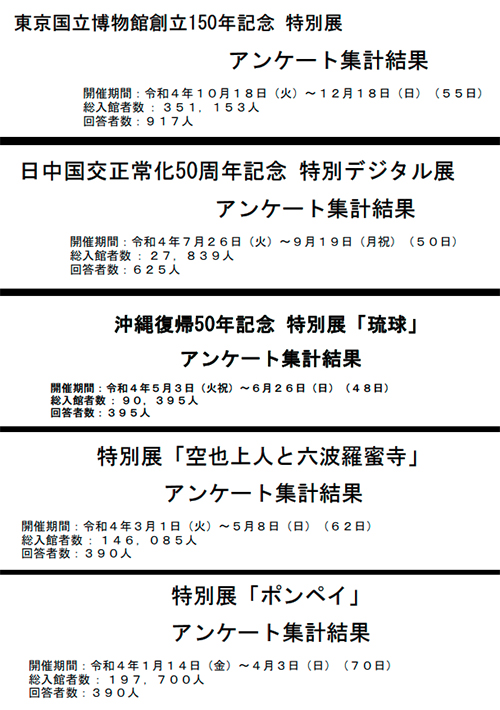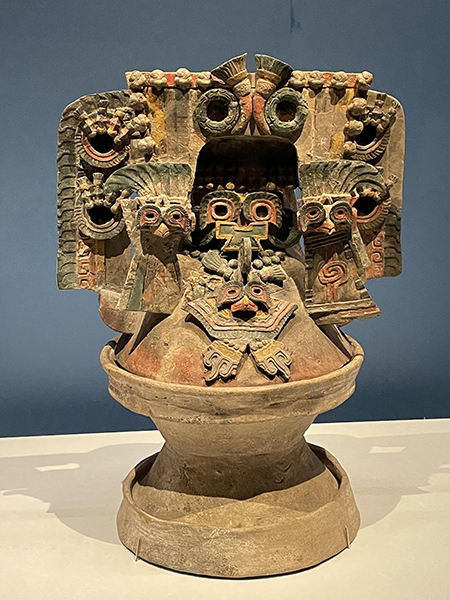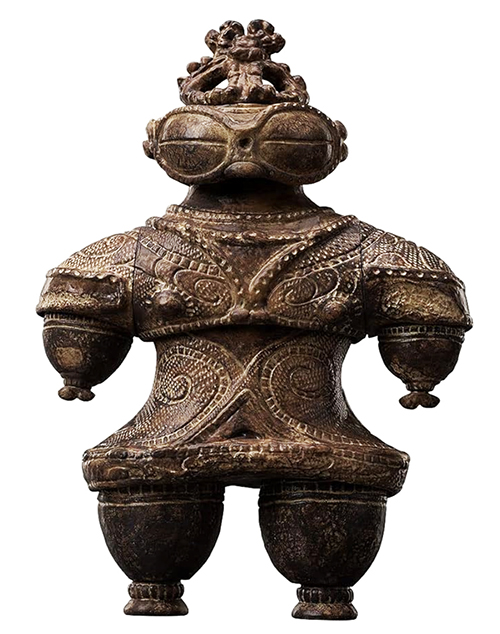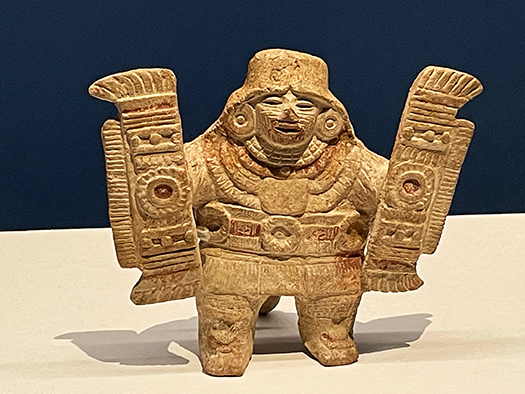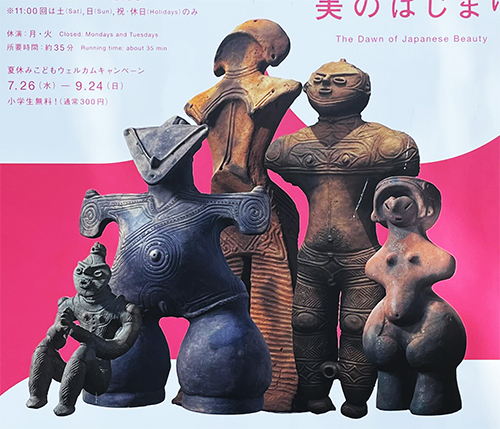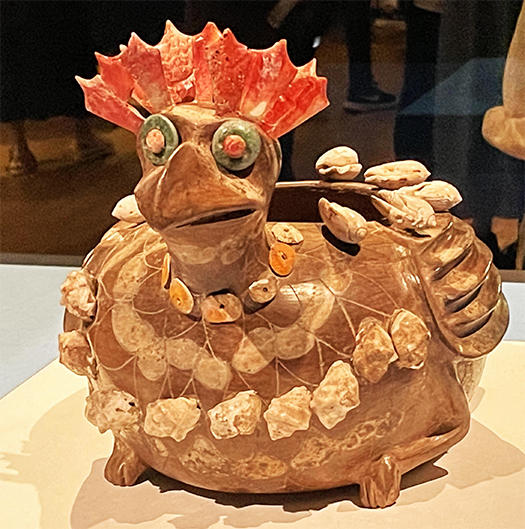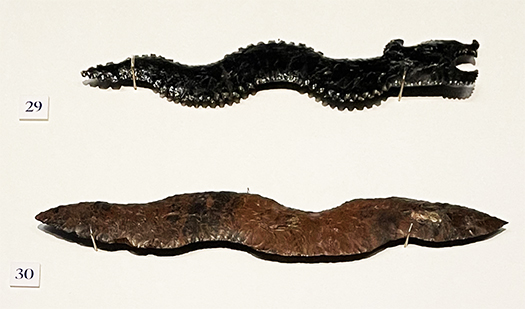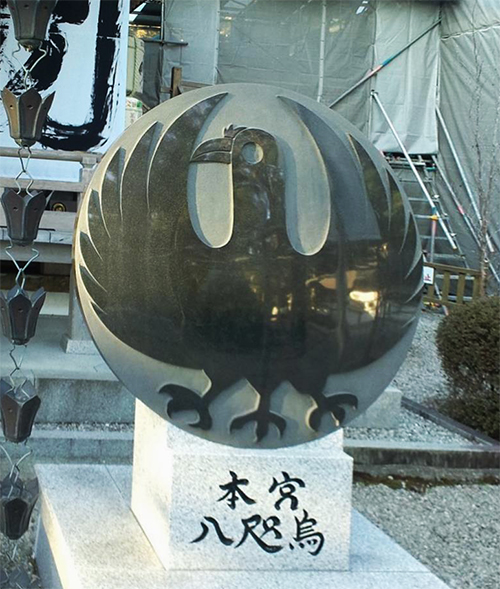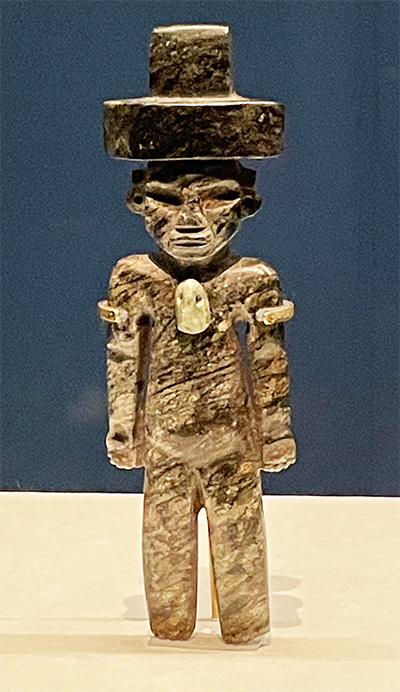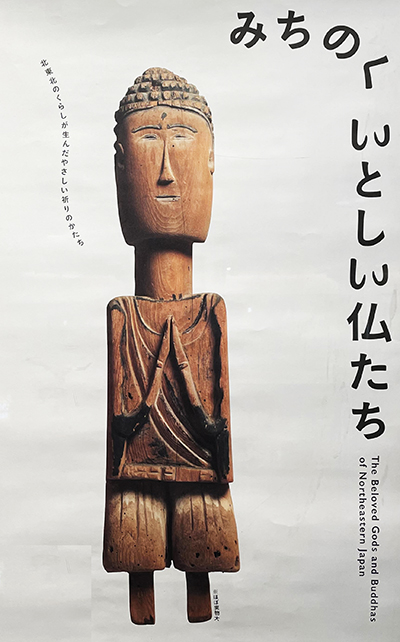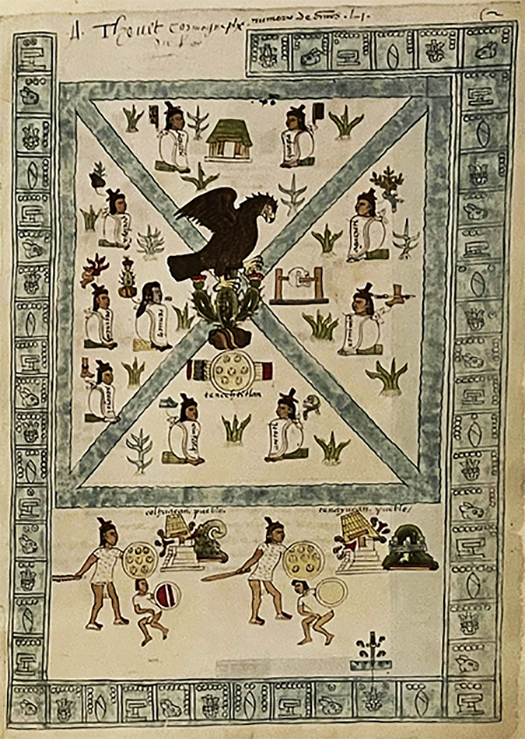
アステカ文明を日本史側と対照させてみるという企画ですが、日本史では他国からの征服を受けた経験が太平洋戦争以前にはない。例外的に現在がアメリカによる占領を経て欧米文化を受容したということで、それ以前の直接的な日本史上の例は上げられない。
たぶん日本の対米敗戦ということは人類史的な視点から今後語られていくことになるのでしょう。現代までのこのことを中間総括すれば、アメリカにとって予想をはるかに超える大成功であり、世界の一強支配というアメリカンドリームの起点に位置づけられるのではないだろうか。
なにより、日本という成熟した国家国民という「戦果」はかれらにとって得難いものだったのだと言える。その成功体験からその後の朝鮮半島、ベトナム、中東などの海外派兵を繰り返したけれど、日本のケースのような戦果をかれらは手にしたとは言えないだろう。
それ以外ということになれば元による日本侵攻が挙げられるのでしょうが、やはり島国である日本を侵略するというのは至って困難で、長期的な征服ということは難しかったといえる。そういった条件で見るとアステカも半島的な地理条件にあたり、また征服者スペインとしてもその支配方法をどうしたらいいか、いろいろと考えていたに違いない。しかし、案に相違してあっという間に「植民地化」が達成されてしまった。
日本の元寇では20万人とも言われる征服軍船団が派遣されたと言われるけれど、その補給線の確保などを考えれば、戦争に勝利したとしてもどうやって支配を維持させるのか、元にそこまでの戦略性が本当にあったのかどうか、大きな疑問符がつく。
アステカ、現在のメキシコシティの基礎となった地域は、大航海時代、大西洋を西に向かって拡張志向を持った当時の最強国家・スペインが支配することになった。本格的な国家意志・命令に基づかない300名程度の遊軍的な部隊が、強大な軍事国家・アステカを滅亡させるに至った。
どうもアステカはその内部に自己崩壊の因子を相当積層させていたのに違いない。また、疫病の蔓延によって戦争維持、国家体制維持が困難に至っていたとも言われている。
上の図はその後、当地を政治的に統治することになったスペインから派遣された提督メンドーサが、本国の国王に対して送った「アステカ帝国についての報告書」とされるメンドーサ写本と呼ばれるものの1ページ。アステカの絵文字で歴史を綴っているもの。中央の鳥はアステカ建国神話の一節を表している。
日本の場合は天皇という「国体の護持」が最優先され、アメリカもそれを受容し、国のメンタリティとしての文化は維持されたけれど、残念ながらアステカでは、こういう「国体」の象徴についても保守できず、スペイン側の文化保存に委ねられる結果となっている。
English version⬇
Aztec Civilization Documentation in Pictographs: Ancient Mexico – 12
Japan, an island nation, was invaded but maintained its independence and was the first country to be occupied in the war against the U.S., but it maintained its national identity. The Aztecs failed to maintain their own culture. The Aztecs were not able to maintain their own culture.
The project is to contrast the Aztec civilization with the Japanese side of history. Japanese history has no experience of conquest from other countries before the Pacific War. The exception is the current acceptance of Western culture after the U.S. occupation, and I cannot raise any direct examples in Japanese history prior to that.
Perhaps Japan’s defeat against the U.S. will be discussed in the future from the perspective of human history. An intermediate summary of this up to the present day would be that it was a far greater success for the U.S. than expected and can be positioned as the starting point of the American dream of one-power domination of the world.
Above all, the “war results” of a mature nation, Japan, were unattainable for them. Although the success of the Japanese experience led to their subsequent deployment overseas to Korea, Vietnam, and the Middle East, it cannot be said that they obtained the same war results as in the case of Japan.
The invasion of Japan by the Yuan Dynasty could be cited as another example, but it would have been extremely difficult for the Yuan to invade the island nation of Japan, and long-term conquest would have been difficult. The Aztecs also had peninsular geographical conditions, and the Spanish conquistadors must have been thinking of various ways to control the Aztecs. However, the colonization of the Aztecs was achieved in no time.
It is said that a fleet of 200,000 conquistadors was dispatched during the Japanese invasion of Japan, but considering the supply lines that had to be secured, there is a big question mark over how to maintain control even if the war was won, and whether Yuan really had that level of strategic thinking.
The Aztecs, the area that became the foundation of present-day Mexico City, were ruled by Spain, the most powerful nation at the time, which had an expansionist orientation westward across the Atlantic Ocean during the Age of Discovery. A nomadic force of about 300 men, not based on a full-fledged national will and command, led to the destruction of the Aztecs, a powerful military state.
Apparently, the Aztecs must have had a considerable amount of self-destructive factors stacked up within them. It is also said that the spread of plague made it difficult to maintain warfare and the state system.
The above illustration is a page from the Codex Mendoza, which is said to be a “report on the Aztec Empire” sent to the king of Spain by Admiral Mendoza, who was dispatched by Spain to rule the region politically. The history is written in Aztec pictographs. The bird in the center represents a passage from the Aztec founding myth.
In the case of Japan, the emperor was the first priority, and the U.S. accepted it and maintained the culture as the mentality of the nation.
Posted on 9月 29th, 2023 by 三木 奎吾
Filed under: 歴史探訪 | No Comments »


